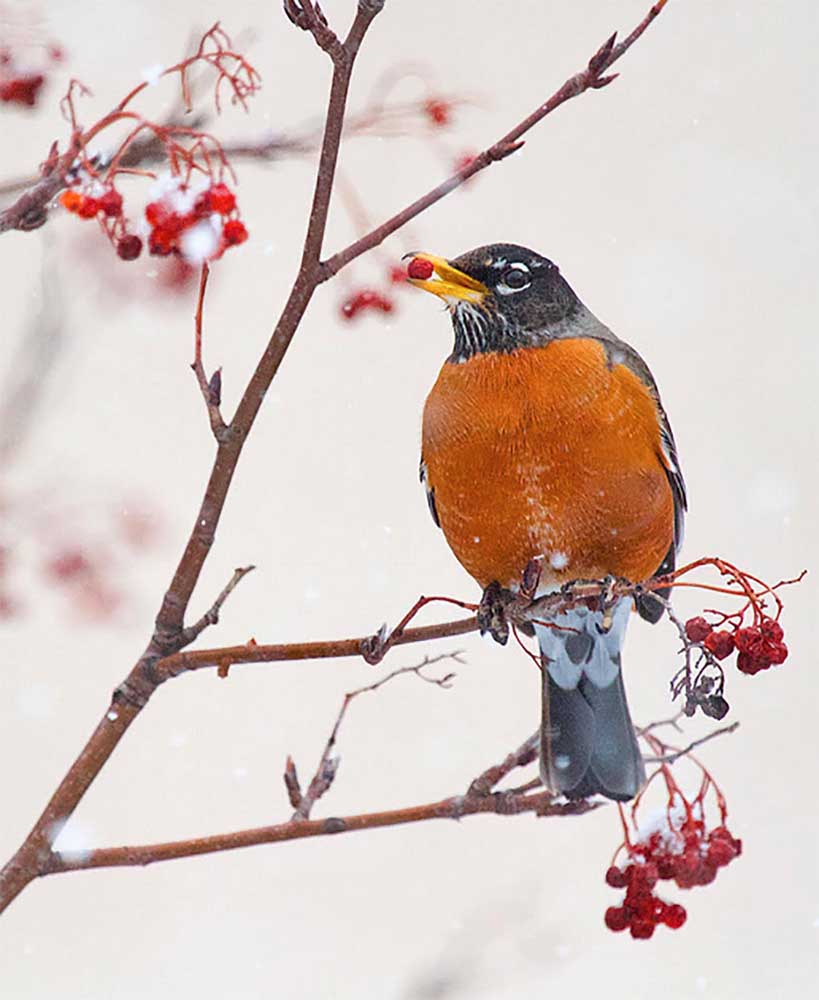Birding: Spring is almost in full bloom!
Published 10:18 am Thursday, March 30, 2023

- The American robin is one of the first birds to arrive in spring. It is considered a definitive harbinger of spring!
Spring has begun! The tree swallows have returned, the crocuses are showing off their purple outfits and the daffodils are showing off their bright yellow blooms. The rhodies are also beginning bloom. The birds are beginning to sing together, like a choir. Soon, we will be entertained by the loud, melodious lilts of the dawn chorus. The show will include the songs of the spotted towhee that sounds like, “drink your tea,” the eerie, quavering whistle of the varied thrush and the cheery song of the American robin.
Trending
Bald eagles are on their nests and other raptors like the red-tailed hawk and the osprey should be busy renovating now. House sparrows are flying by with beaks full of nesting material. I observed one raven breaking thin branches from a tree or two and carrying them off for its nest.
Speaking of the dawn chorus, the male red-winged blackbird’s, “konk-a-ree, konk-a-ree” is now ringing out from many Peninsula wetlands. Tarlatt of the south bay unit of the refuge is a great place to look for tree swallows and violet greens. They should be inspecting the nesting boxes on 85th and 95th any day now. This is also a good time to take a walk to the observation blind. There is a small wetland in front of the blind as well as the larger wetland on 85th. Possibilities are the Pacific wren, white-crowned sparrows, ringed-necked ducks, Steller’s jay, northern flicker, mallards, cackling geese and Canadas. The Canada geese are already patrolling the waterways of the Peninsula looking for the perfect nesting place.
The house finch is one the most familiar feeder birds of the northwest. Their rich, musical mixture of chirping whistles fills the air. Their song is loud and ends with a trill of very loud notes. They can be found in a wide variety of habitats, including brushy areas, woodlands, parks, and residential areas. They have nested in my hanging baskets and flowerpots.
Trending
Another species to listen for is the woodpecker. Downy and hairy woodpeckers and especially northern flickers are already “knocking on wood” to attract a female and to mark the boundaries of its breeding territory. Northern flickers like to hammer away on a metal chimney or the metal eaves of a building. One of my friends heard a terrific noise that was so loud it frightened her. She was inside the house when the loud knocking occurred. It persisted so she taped the sound and subsequently called her handy man, played the recording over the phone, and asked what it might be. She was worried that it might indicate a problem with the roof or eaves trough. She laughed and laughed when he said, “It is a northern flicker knocking on the metal of your eaves”! The woodpeckers’ sounds announcing spring are loud and can be heard from a far. Listen for the loud rhythmic knocking of the flicker, downy and/or hairy woodpecker. It might give you goose bumps and bring joy to your heart.
It’s time to start listening for the dawn chorus. It begins early so you may have to get up at the crack of dawn to catch one of the best musical performances you will ever hear. And stay tuned for the latest adventures of Lady Junco. Will she choose to nest at the Hosta Hotel, the Chassis Hotel, or some other exotic location? She is a story unto herself. Spring is a reminder of renewal and hope. It is a joyous time of year. Stop, look, and listen and let the birds bring you joy and happiness. Happy birding!









